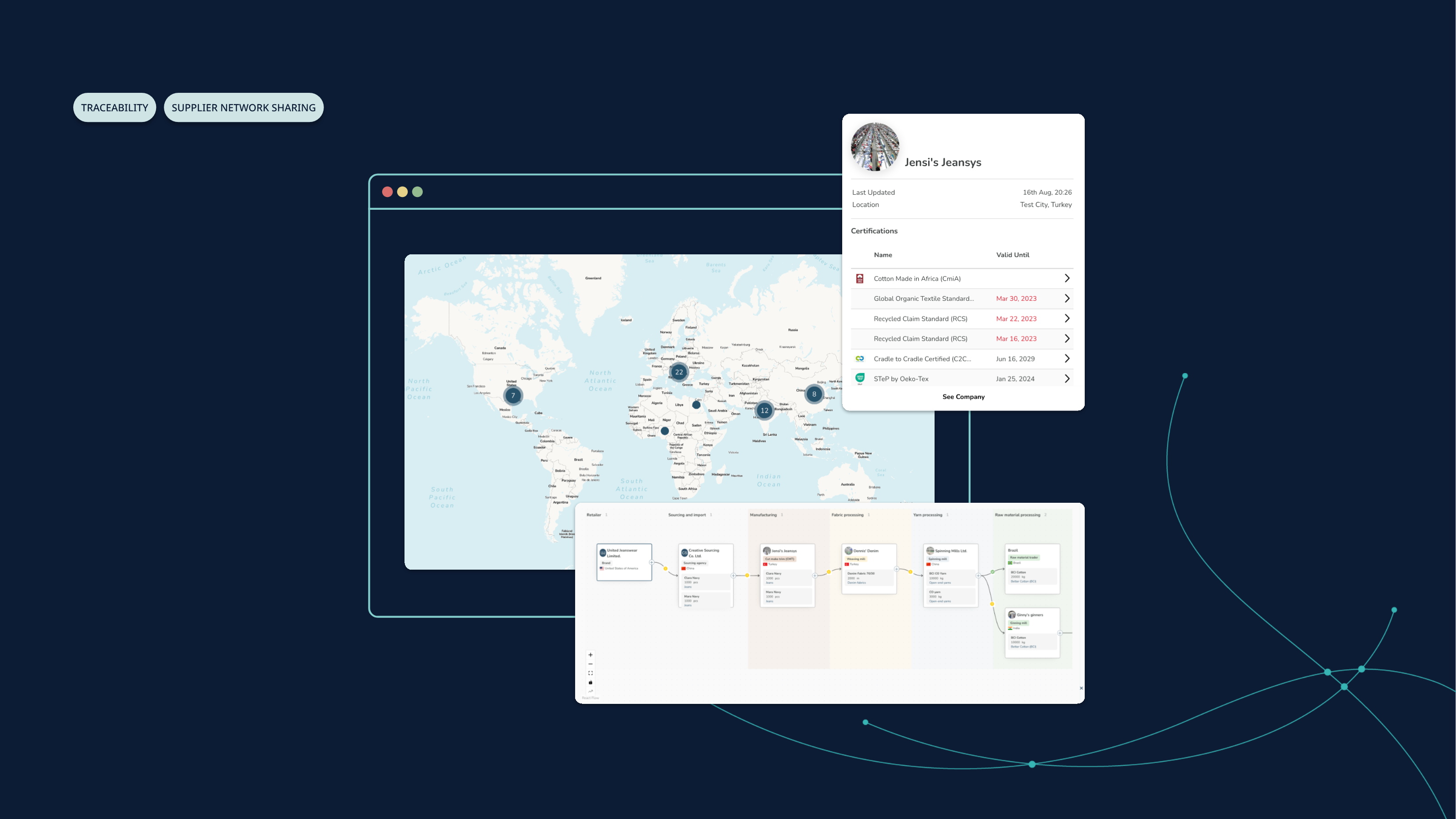
The power of transparency: Transforming the future of fashion
Ever since the Rana Plaza catastrophe in Bangladesh with over 1100 people killed in 2013, consumers have become more aware of the pressing supply chain issues in the fashion industry. Sustainability in the fashion industry is on the rise and despite its relatively small size in terms of sales compared to conventional fashion, its growth is making every fashion company pay attention.
Consumers look for sustainable fashion and have started to become interested in the origin of their products and the standards under which these have been crafted. Movements like “Fridays for Future” and “Fashion Revolution” are result and proof for this change. Especially the latter, which encourages - with their visionary question “Who made my clothes?” - a strong shift towards more transparent production efforts and underlining a clear connection between transparency and sustainability.
This deep interest in understanding the history of a product is summarized in the term consumer empowerment. A term that has been strongly triggered by the information possibilities of the internet and that describes the consumer’s demand to have the same information basis as the brand before making a purchase.
The relevance of transparency is becoming obvious. But what are the underlying reasons for the growing demand and how can transparency be used to really create a competitive advantage?
Building trust through transparency
Until now, there is no valid, widespread definition of sustainable fashion. As a result, every brand and every consumer has a different understanding how a sustainable product should be crafted and what it should be made out of. Certificates give a first hint for consumers. But also here knowledge and transparency are still missing.
There are many different certificates, validating various parts in the supply chain towards many different standards. There are barely any experts that can give you a clear overview over certificates. Therefore, the question arises: If even experts don’t know, how should the consumer know?
If consumers feel that a brand’s standards are different from their own, it will result in uncertainty at best and might even turn into mistrust. Both feelings will negatively influence the purchasing decision, despite the brand’s efforts to be more sustainable following their own standards.
Transparency is the solution to this issue, if implemented correctly. Transparency does not only allow brands to communicate how a they define sustainability, but also how they act accordingly. Thereby, consumers will get a better understanding and can relate to the brand’s sustainability standards.
This is the key to building long-term consumer trust and the best way to ensure future success by fostering greater consumer loyalty. Tracing supply chains and openly communicating them enables brands to ultimately prove their sustainability claims. The good thing: As long as a brand acts as it promises, there is nothing to hide and therefore also nothing to lose.
Engaging through storytelling
Apart from building consumer trust, being transparent about one’s supply chains allows brands to tell the story behind their products in a new and more emotional way. Does the brand have a traditional or locally specific design? Does the production process have something unique? Who are the people crafting the products? How are the suppliers and manufacturers reducing their environmental impact? Being able to connect a fashion item to its story and the people behind it adds a human side to the product.
People buy stories and emotions. As a result, the supply chain and the story of the product can suddenly become a huge perceived value add to the actual product. Transparency allows for consumer understanding and an emotional connection between the owner and his or her new favorite piece of clothing.
Innovating transparency communication
Next to consumer trust and product storytelling, the communication of transparency itself can be seen as interesting value add to the product. In order to make supply chain information available for consumers, the data needs to be connected to the respective product. Currently, this is done with QR-codes or NFC-tags that are integrated into the product. These so-called identifiers can be read by smartphones to access the collected information. This interaction with the product is a relatively new way of digital communication that allows brands to be perceived as more innovative and interesting, especially in the eyes of the younger generation.
Embrace transparency in supply chains
Sustainably and ethically produced clothes are not a new phenomenon that young fashion labels have introduced us to. Sustainable fashion has been around us for decades. Many traditional small- and medium-sized fashion brands, which have always produced locally and with great respect for people and the planet, usually have great knowledge about their processes and impact.
Unfortunately, many of them struggle to leave their traditional image behind and to benefit from the more contemporary environmentalist zeitgeist today. Giving insights into their historically sustainable supply chains and telling the story digitally can lay the foundation for a makeover of their communication and branding strategy. It will give them the opportunity to appeal to a new and younger target group that will become increasingly important in the upcoming years.

